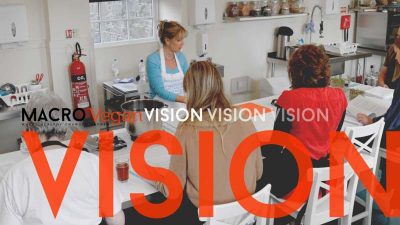Food Enzymes & Health

Other ways to naturally increase your enzyme levels are, increasing your intake of raw, living foods, eat fewer calories, and CHEW your food thoroughly. I have been sprouting for decades and it’s something I urge you all to adapt into your diet. All through winter when your food is always cooked you can add these sprouts to soups, beans, grains, vegetables.
Your immune system begins in your gut and if you have enzyme and digestive issues, chances are your immune system isn’t functioning as well as it should be. Your capacity for enzyme production declines with age so it becomes even more important to have a diet that supports ways to naturally boost our enzymes.
Last weekend my workshop focused on food enzymes and health. The three basic categories of enzymes; digestive, metabolic and food based are equally important. When we have a good supply of digestive enzymes the less burden is placed on our bodies to produce these, so whatever enzymes are not used up in digestion is then available to help with other important physiological processes. Here are a few lovely recipes we made at the workshop for you to enjoy.
Cavolo Nero Side Dish
A loose-leafed cabbage from Tuscany, Italy. The leaves are a very dark green, almost black, hence its name, which translates as ‘black cabbage’. It has a pleasantly tangy, bitter flavour, with a sweet aftertaste. Look for crisp, unblemished leaves, with no holes. Avoid cores that are split or dry. Remove old or damaged outer leaves, cut the leaves free of the core and slice out any tough central stalks. Rinse, then chop or slice. Steam for a few minutes and serve with some fresh sprouts and a splash of reduced balsamic vinegar. Delicious.
White Bean Soup
1 red onion, chopped
1 leek, finely sliced
3 cloves garlic, chopped
2 carrots, chopped
2 sticks celery, sliced
8 to 10 fresh shitake mushrooms, thinly sliced
1 tbsp. chopped fresh rosemary, (plus 4 sprigs)
1 jar organic white beans, (haricot or butter beans)
1 ½ cups vegetable stock
1 tbsp, organic tomato paste
½ cup fresh coriander, chopped
In a soup pot warm a little water, add the onion, leek and garlic and sauté for 5 minutes. Stir in the carrots, celery, mushrooms and chopped rosemary, (the springs are for garnish). Cook for 5 minutes, covered to allow the vegetables to soften slightly, add some water if the pot seems dry and the ingredients are ‘catching’.
Add the jar of white beans plus their juice along with the vegetable stock and the tomato paste. Cover and cook over low heat for 15 – 20 minutes. Stir in the fresh coriander and leave to sit for 5 minutes.
Ladle the stew into warmed bowls and garnish each bowl with a rosemary sprig.
Haricot beans are so deliciously creamy and taste so sweet. You can also serve this soup on top of any grain of your choice. I enjoy it with couscous and a serving of fresh salad greens and sprouts.
To lighten up the diet for summer we made a very simple sea vegetable salad to serve on the side.
Sea Vegetable Salad
½ pack of Clearspring Sea Vegetable Salad
Dressing:
1 tbs of Clearspring toasted sesame oil
2 tbs of Clearspring Mikawa Mirin
2 tbs of Clearspring Brown Rice Vinegar
2 tbs of Clearspring Shoyu Soya Sauce
Soak the Sea vegetable salad in water for 10 mins. Drain the sea vegetables and mix with tofu and the dressing.
In good health
Marlene x

